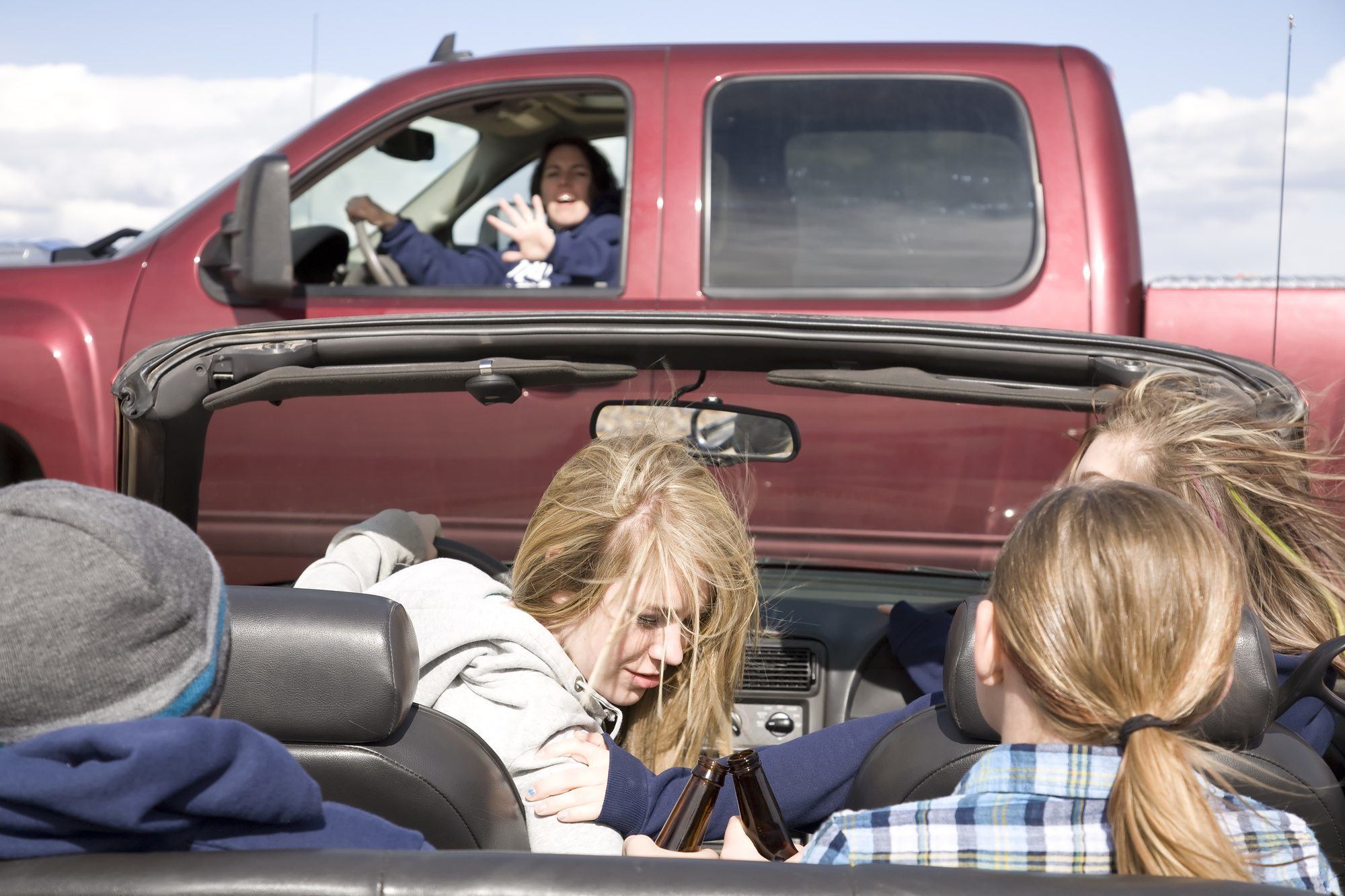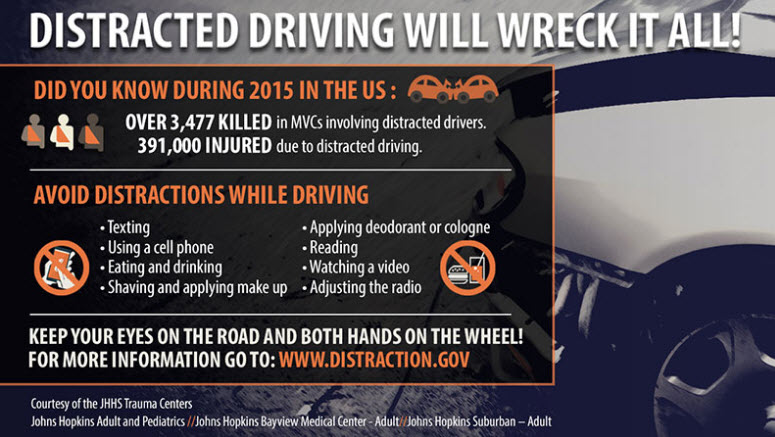The dangers of texting while driving is well-known, but a new study found that it’s not the only dangerous distraction.
Researchers from the Virginia Tech Transportation Institute found that two-thirds of drivers are distracted in the seconds before a driving accident occurs.
Celluphones were the most common cause, but drivers were also distracted by reading or writing, reaching for something or using a touchscreen on their dashboard.
More...
They estimate that engaging in distracting activities while behind the wheel more than doubles the risk of a crash. Still, more than half of the drivers in the study did so.
In 2016 out of 1445 fatal crashes in Britain that resulted in one-or more deaths, the police recorded 397 incidences of contributory factors of "failure to look" and a further 140 incidences of driver in-vehicle distractions, distractions outside the vehicle, and phone usage.

“We tend to underestimate the hazards of driving because we do it so often and it’s a critical part of daily life, but we shouldn’t take our safety for granted,” says Dr. Sandhya Nagubadi, an internal medicine physician on staff at Advocate South Suburban Hospital in Hazel Crest, Ill.
To accurately track people’s driving habits, researchers installed interior video cameras and other tracking devices in more than 3,500 cars and followed volunteer drivers ages 16 to 98 over a three-year period.
Previous studies have relied on experiments with test drivers and reports from crash investigations. In those instances, it was difficult to determine what exactly happens in those critical seconds before an accident occurs.
“Traffic accidents are so common that they are the leading cause of death for American teens,” says Dr. Nagubadi. “States across the country have enacted laws banning cell phone mobile use while driving, but clearly the problem persists.”
When using roads, driver thoughts (mind wandering) can easily wander to things other than the safety of the task at hand.
Driving, particularly on a familiar route, can be perceived as something we can all do on semi-automatic or a place where we consciously decide to "think about other things , such as work or relationships, or reflect on a memory.
This can be particularly the case in a busy world "where there is little downtime" to be on our own and sit with our own thoughts.
In one study, more than half of driving thoughts ("what are you thinking about") were on subjects unrelated to the driving task or road safety.
Mind wandering is definitely a distraction in driving a vehicle. When your mind is wandering, you are not paying full attention to the road and your surroundings. This can cause you to miss important cues and hazards that could potentially lead to an accident. It's important to stay present and focused while driving to ensure your safety and the safety of those around you. Avoid distractions and stay alert.

In 2014, there were more than 6 million automobile accidents reported to police, in which more than 30,000 Americans died and another 2.3 million were injured, according to statistics from the U.S. Department of Transportation’s National Highway Traffic Safety Administration (NHTSA).
NHTSA recently reported a steep 9.3 percent increase in traffic-related deaths for the first nine months of 2015, as compared to 2014. Previous research estimates that human factors contribute to 94 percent of crashes.
If you need to make a call or send a text, pull over for a moment and do it safely. You have to ask yourself, is this one thing so urgent that it’s worth more than our lives?
If you want to drive safely:
Plan your route ahead of time and cue up your playlist before you hit the road. Electronic devices can make a drive easier or more pleasurable, but not if you’re programming them while behind the wheel.
Don’t eat or do any personal grooming while driving.
Doing so may be convenient and save you time, but it puts you at risk. Try to wake up earlier or plan extra time between commitments so you don’t feel as rushed.

Don’t drive when tired. Some studies have found drowsiness to be equally as dangerous as driving drunk.
Invite a friend along for the ride. Research from the National Safety Council found that adult passengers can help drivers by monitoring traffic and the environment around them.
They may offer clues about looming dangers by stopping a conversation mid-sentence, for instance.
Conclusion
How many of professional drivers know they'd face a four-week suspension for using a mobile phone while driving a commercial vehicle?
Or that they'd be suspended for six weeks for a second speeding offence?
Some possibly don't even know the Traffic Commissioner can act against their professional driving licences.
That's why our vocational driver guidance has 26 different examples of how traffic commissioners deal with driver conduct.
The case studies cover a range of circumstances, including:
- mobile phone offending
- drink driving bans
- using a magnet to interfere with the tachograph
- using another driver's Digi card
- failing to respond to the directions of a DVSA stopping officer
The guidance also lists the starting points which traffic commissioners consider for different offences.


